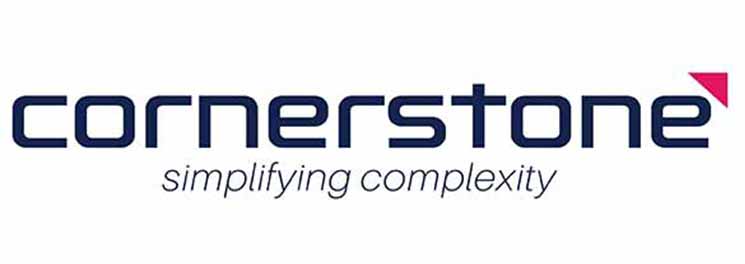
Traditional, Transitional, Transformational: How Finance Teams Can Evolve with the 3Ts
Budgeting season, reporting cycles and endless spreadsheets – if this describes your experience, you’re not alone.
Many finance teams find themselves stuck in a cycle of manual processes and reactive reporting, weighed down by tools and methods that haven’t evolved alongside their organisations. But here’s the thing: understanding where you are today is the first step to building something better.
The good news is that transformation doesn’t need to feel overwhelming or expensive. A phased approach allows organisations to modernise step-by-step under what we call the 3Ts Framework (Traditional, Transitional and Transformational). It provides a clear and manageable roadmap to modernise your finance function, one step at a time.
The first step is understanding where you’re starting from. So, where do you sit right now?
Phase 1: Traditional (manual tasks, missed opportunities)
If you’re in the Traditional phase, your finance team is probably all too familiar with manual work, slow budgeting and reporting cycles, and static spreadsheets. It’s not that the processes don’t work – it’s that they consume time and energy that could be better spent elsewhere. From the perspective of CFOs and other finance leaders, month-end reporting might take days, even weeks, and producing scenario plans or responding to executive questions in real time? Nearly impossible.
For many finance teams, this phase is characterised by hard work with limited rewards. Reports are created painstakingly, numbers are manually consolidated, and it’s often unclear whether the data is up-to-date by the time it reaches the boardroom table. Finance professionals often become “data consolidators” instead of strategic partners, focusing on inputs instead of insights.
The impact goes deeper than lost time. Traditional processes add unnecessary pressure to already stretched teams, contributing to burnout, low morale and attrition. According to The Fintech Times, 52% of finance professionals report poor work-life balance, with many seeking roles in other sectors that offer innovation and flexibility. Such turnover doesn’t just hurt team productivity – it takes institutional knowledge, critical skills and confidence with it.
Phase 2: Transitional (streamline, automate and build confidence)
For finance leaders ready to break free from manual tasks, the Transitional phase offers the first glimmer of progress. Here, the focus is on making improvements that are manageable and impactful. Tasks that once took weeks – like monthly forecasts or variance analysis – can be streamlined through automation, freeing up valuable hours.
It’s in this phase that teams begin to move from being purely reactive to more proactive. You will start seeing cleaner data, faster turnaround times and the much greater confidence in your numbers. Collaboration improves as teams begin shifting from isolated silos to more integrated workflows.
The most encouraging part is that getting started is easier than you think. Instead of diving into large, cost-intensive overhauls, you can work from a logical checklist of improvements. Automating repetitive tasks, updating scenario plans in real time and introducing tools to support rolling forecasts are great places to start. These changes don’t just reduce workload – they allow your team to focus on work that adds value to the business.
One of the greatest advantages of the Transitional stage is building momentum. Small wins here prove that transformation works and give teams the confidence to take bigger steps.
Phase 3: Transformational (agile, predictive and future-ready)
At the top of the maturity curve is the Transformational phase, where finance moves from being a back-office function to a true driver of business strategy. The days of rushing to find answers or relying on outdated data are behind you. Instead, finance teams leverage tools like AI, cloud-based planning platforms and predictive analytics to deliver insights in real time.
Imagine this: You’re in a board meeting, and an unexpected question comes up – “What would happen if we reduced costs in this region by 10%?” Instead of searching through spreadsheets or delaying a response, you simply adjust a parameter in your planning tool and see the results instantly. This is the power of a truly transformational finance function.
In this phase, finance professionals become trusted advisors, partnering with other teams to make strategic decisions. Systems are self-managed, workflows are agile and planning happens on-demand. Cycle times are faster, scenario analysis is rapid and teams spend more time driving the business forward.
Now, you might be thinking: “That all sounds great, but we’re nowhere near that.” And that’s okay. Transformation isn’t a destination you reach overnight. Even the most advanced teams didn’t get there in one leap – they worked through the Traditional and Transitional phases, building capabilities along the way.
A logical checklist: Small steps for big impact
If you’re wondering where to start, the answer is simple: with the small, easy wins. A checklist of logical improvements – like automating reporting tasks, improving data consolidation, or enhancing scenario planning – can set your team on the path to transformation. It doesn’t need to be perfect; it just needs to begin.
The beauty of the 3Ts framework is that it’s flexible. Progress happens in manageable phases, with each step building on the last. It’s a practical, cost-effective way to transform your finance function without overwhelming your team or your budgets.
Where do you sit?
The Traditional phase is where most teams begin. The Transformational phase is the aspiration. But it’s the Transitional phase – the phase of progress and momentum – where the real journey begins.
By understanding where you sit today, you can chart a path forward that works for your team, your organisation and your resources. Transformation isn’t about dismantling everything and starting again. It’s about taking smarter, incremental steps that move you forward.
So, where does your finance team sit? And more importantly, what’s your next move?
We are enablers of change and transformation in Financial Planning & Analytics, Supply Chain, Information Management, , Management Consulting, Project Management, and Managed Application Services. Contact us to find out more or call 1300 841 048 to find out how.





